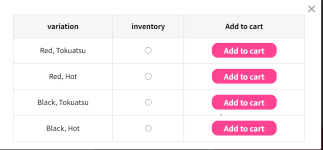says
Shoo...nothing to see here. - zeio
Was going to supplement NextLevel's post in the European Games thread, but keeping it here for future reference.On the "wrapping" itself, what often gets missed is that it only happens during contact (or very close to contact) and continues during the followthrough. There's a couple of Ma Long slowmos that illustrates the sudden shaking of the racket from the pronation/supination during contact. From the majority of the backswing, it should be mainly trying to hit the ball square on to ensure max accuracy (the more tangential the contact is the more error prone the stroke is) and this is where the "convex" stroke comes in. It is only once you're just about to hit the ball that it transitions from a "convex" to a "concave" stroke - this is why I also don't like trying to distinguish it using these terms and a lot of ppl get confused (I used to be quite confused myself too) - make solid contact then brush is a lot simpler as an instruction and produces the same results.
Table tennis is a very complex sport with complex interactions and sometimes trying to simplify it using overly simple equations like what brokenball always tries to do are bound to fail. It's like trying to explain quantum mechanics using Newtonian laws - the theory simply breaks down.
Images of the path of the racket tip for the FH and BH mid-far distance loop from the studies from mainland China.
FH
https://i.imgur.com/KkgPY1k.png
FH and BH
https://i.imgur.com/cOPuJIa.png
Also, for those who haven't had a chance, check out the path and racket angle of the FH counterhit by Singaporean expert (pro teams and clubs) and novice players (1 hour of playtime per week, w/o formal training) in a study (2017) from Singapore.
http://mytabletennis.net/forum/foru...ID=1111185&title=looping-racket-angle#1111185
Last edited:











